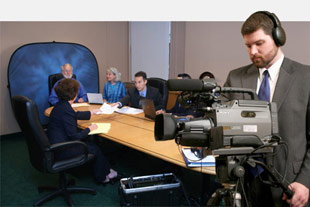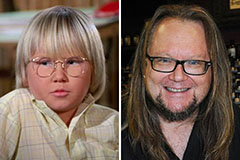Why Legal Videography Is Essential for Accurate Court Recordings
The duty of lawful videography in court settings can not be overstated, as it works as an important device for preserving the stability of court documents. By capturing both spoken and non-verbal interaction, it enhances the clearness of witness testaments and reflects the subtleties of court room communications. This extensive documentation not only aids in lowering possible misconceptions yet also sustains appellate reviews, consequently reinforcing the judicial procedure. However, the ramifications of integrating legal videography into typical court room techniques raise vital inquiries concerning its more comprehensive influence on the lawful system. What might these implications require?
Relevance of Visual Evidence
In the world of lawful proceedings, the significance of visual evidence can not be overemphasized. Aesthetic evidence works as a powerful tool in establishing facts, substantiating statements, and improving the total quality of an instance. This type of evidence, that includes photos, video clips, and layouts, can provide a concrete context that spoken summaries typically do not have, consequently using juries and courts a more clear understanding of the conditions surrounding an instance.
Additionally, visual evidence aids in the retention of information. Human cognition is inherently aesthetic, and individuals are most likely to keep in mind and understand details offered in a visual style. In the court, this can be critical, as compelling aesthetic proof can guide viewpoints and strengthen the story presented by legal representatives.
Furthermore, using visual evidence can lessen misconceptions and uncertainties that typically arise from verbal exchanges. By supplying a direct depiction of events, aesthetic proof aids to get rid of subjective analyses and cultivates an extra objective evaluation of the truths. The combination of aesthetic proof into legal proceedings not just reinforces the stability of the judicial procedure yet additionally enhances the chance of attaining a just result.
Catching Non-Verbal Hints
Utilizing sophisticated videography strategies can significantly improve the capture of non-verbal cues throughout legal process. Non-verbal communication, consisting of faces, body movement, and eye get in touch with, plays an essential duty in sharing feelings and intents that might not be clearly specified in spoken testament. legal videography. Legal videography employs high-def cams and strategic angles to make certain that these subtle signs are recorded with clearness and accuracy
The ability to analyze non-verbal behavior can provide useful context to statements made throughout court sessions. A witness's hesitation or confidence can be interpreted with their position or gestures, potentially influencing the court's perception of reputation. Additionally, using close-up shots can assist focus on an audio speaker's expressions, enabling a much more nuanced understanding of the testament.
Furthermore, integrating numerous electronic camera angles can produce a comprehensive view of interactions, highlighting characteristics between events entailed. This diverse approach not just boosts the precision of the court record but also help in maintaining the integrity of the judicial process - legal videography. Inevitably, capturing non-verbal cues via legal videography fosters a richer, extra full representation of courtroom process

Enhancing Testament Integrity
The integrity of testament can be considerably bolstered via using premium lawful videography. Video recordings work as an unbiased medium that captures not just the talked words of witnesses but likewise the subtleties of their delivery, consisting of tone, pacing, and psychological expressiveness. This complex documentation offers a more clear understanding of the witness's credibility and purposes, which can be critical in legal process.
In addition, legal videography reduces the possibility for misconceptions that might develop from composed records alone. When jurors can observe a witness's disposition and body movement along with their statement, they are better outfitted to evaluate the authenticity and integrity of the proof provided. This visual context can reinforce the testimonial story, making it much more compelling and legitimate.
Additionally, the presence of a video recording can deter potential inconsistencies in testimony. find more information Witnesses might be extra careful in their statements when they recognize they are being videotaped, causing more exact and sincere accounts. Overall, high-quality lawful videography improves the integrity of testimony, making certain that the court has access to a complete and sincere depiction of the facts as communicated by the witnesses.
Sustaining Appeals and Reviews
Lawful videography plays a crucial duty in sustaining charms and evaluations by offering a thorough visual document of courtroom process. This aesthetic paperwork records not just the spoken words of witnesses and lawyers yet also the nuances of body language, intonation, and courtroom characteristics. Such components can be essential in comprehending the context of testaments and debates offered.
In the appellate procedure, where the focus gets on errors of legislation and step-by-step justness, a video clip document can act as a crucial device for appellate courts. It enables courts to evaluate the initial trial context, making sure that choices are based upon a full understanding of the process. The ability to aesthetically assess the temperament of witnesses or the interactions between events can reveal insights that composed transcripts may forget.

In addition, legal videography can help in making clear obscurities in testaments or procedural rulings, consequently strengthening the basis for an appeal. By using a reliable, unbiased account of what taken place in court, lawful videography not only sustains the honesty of the legal process yet likewise encourages all parties included to make educated decisions concerning their situations.
Improving Court Procedures
Enhancing courtroom efficiency, lawful videography enhances processes by giving instant accessibility to visual records of procedures. This technology allows judges, lawyers, and courts to revisit critical statement and evidence, ensuring that all parties have a clear understanding of the case. By capturing the nuances of verbal and non-verbal communication, videography enriches the record, making it less complicated to realize the context and weight of statements.

Furthermore, video recordings can help with remote engagement in hearings, permitting for higher versatility in scheduling and engagement, which is especially important in intricate situations entailing multiple stakeholders.
Conclusion
In conclusion, lawful videography plays a vital role in making certain exact court recordings by supplying important aesthetic evidence that captures both verbal and non-verbal communication. This practice boosts the dependability of testimonies, sustains appellate testimonials, and improves court procedures. By cultivating a thorough understanding of court room characteristics, legal videography ultimately adds to a lot more equitable judicial outcomes, enhancing the stability of the lawful system and helping with informed decision-making.
 Kel Mitchell Then & Now!
Kel Mitchell Then & Now! Devin Ratray Then & Now!
Devin Ratray Then & Now! Robbie Rist Then & Now!
Robbie Rist Then & Now! Suri Cruise Then & Now!
Suri Cruise Then & Now! Atticus Shaffer Then & Now!
Atticus Shaffer Then & Now!